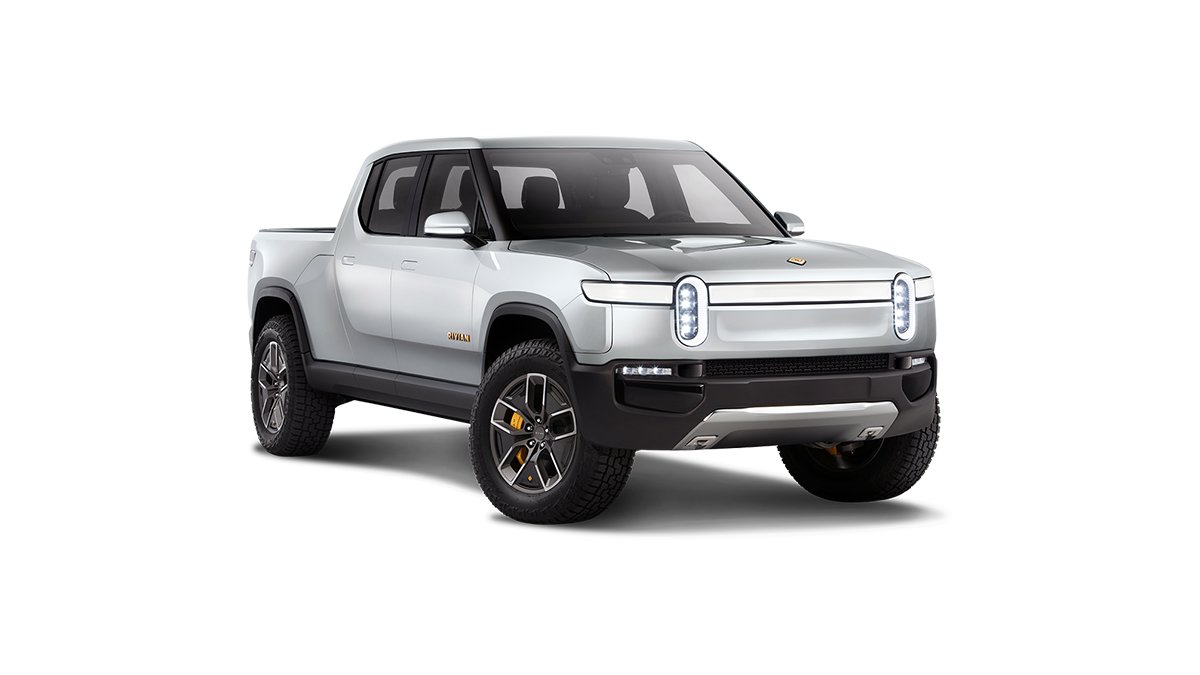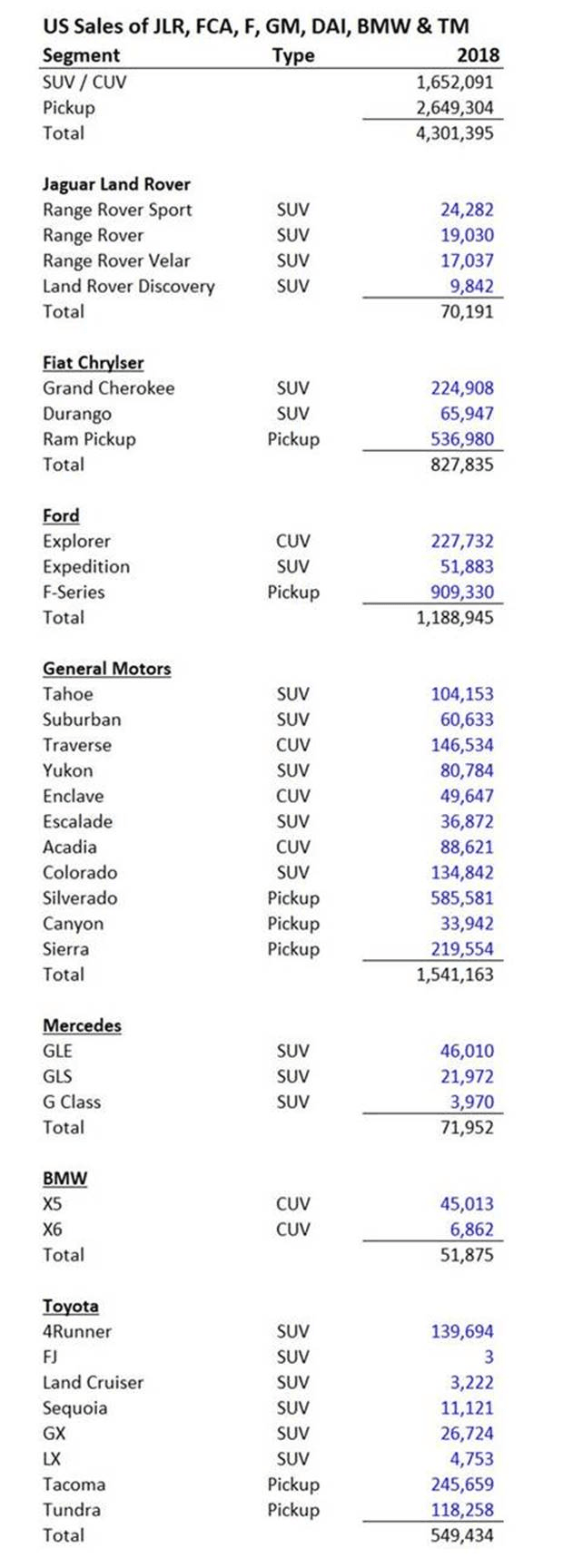Whitney Tilson’s email to investors discussing two of his readers having an enlightening debate on Rivian‘s pickup truck.
The first writes (in response to my last email):
Q2 hedge fund letters, conference, scoops etc
I think your friend is maybe missing a number of things that make Rivian appealing, as well as the bigger picture on what they have.
First, they have 2 products that may launch end of 2020 or into 2021 – the R1T (the pickup) and the R1S (the SUV). They have an old-school engineering philosophy - effectively body on frame (a “skateboard” as it’s known for electric vehicles) which actually allows them to throw other bodies on top of frame. They just so happen to have a number of their protypes running around Detroit in F-150 bodies (or see below), which led to a ton of rumors that Ford was testing an electric F-150. Similar to the Suburban/Avalanche/Silverado triplets, the body on frame allows for a lot of combinations and additional scale, and since electric powertrains are less mechanically complicated (wires instead of driveshafts), its almost certainly more flexible an architecture than traditional BF.
Second, they are generally pretty good looking vehicles and feel fresh. It doesn’t hurt that the main designer designed the Grand Cherokee and comes from FCA.
Third, electric pickups are not work trucks and will not be until you can swap a battery in under 5 minutes. The R1T is going after people on the coasts who are buying High Country Silverados, Denali Sierras, King Ranch and Raptor F-150’s, Laramie Longhorn Rams, Jeep Gladiators and Toyota Tacoma TRD pro’s. The R1S is likely going to peel people away from Range Rover, Jeep, Mercedes, Toyota and BMW, and to a lesser extent Ford and GM. See below where I put a quick list together on nameplates – we’re talking 2018 unit sales of 4,300,000.
It remains to be seen whether Rivian can succeed, but there is a lot to like about it and I’m rooting for them. My understanding is that they were in incubation phase until last year, basically going dark and working on their tech. They then made a pretty big splash to get the attention they need to launch a brand (no easy feat, look how much FCA is spending on Alfa Romeo). The fact that Ford invested is huge. Not that Ford has traditionally made the best decisions, but they know what they are doing from a manufacturing standpoint and my understanding is Rivian is planning to supply the skateboard platform to at least one future Ford product (basically a platform CKD kit sent to a Ford factory for assembly with the body). The beauty of the flexible architecture is that it has a ton of uses.
And maybe most importantly, they don’t have Elon Musk running the show. There will be real internal controls and procedures and Ford is going to have to make sure customers aren’t put in danger in the vehicles.
This is a Rivian, not an F-150
Here’s a rough list of the vehicles they can conquest owners from:
The other replies:
Attempting to respond to all the points made:
First, about the “skateboard.” This is another word for “platform.” The concept is very simple and has been around nearly forever. Larry Burns, then at GM, brought the principle forward again approximately two decades ago: https://www.forbes.com/sites/samabuelsamid/2016/05/23/the-father-of-the-skateboard-chassis-dr-chris-borroni-bird/#3a8bcff07b30
Every automaker is developing such a skateboard platform, upon which they will launch anywhere between 6 and 50+ vehicles each. VW will launch something around 50 vehicles on such a skateboard. Most automakers will launch, say, 6-12 different variants. Altogether, there will be at least 200 of them in the market by the end of 2022 or so.
Mention this to anyone in charge of engineering or planning at any automaker, and their eyes will roll as if they are saying “Yes, I know, a car has four wheels.” This is axiomatic in the industry. It’s like saying that making a lighter car will save on fuel.
Rivian is, as best as any outsider can tell, doing only what all the existing automakers are already developing. VW starts production of its first model at the end of this very year, 2019. Until someone can explain to me why Rivian’s skateboard design is somehow better than that of all the other automakers currently under development, all I have is a nondescript claim with zero evidence to back it up. Or even a person who has driven the vehicle. Because the vehicle doesn’t exist beyond the concept/mule stage.
So why did Ford invest? First, keep in mind that there was something of a bidding war between GM and Ford. It wasn’t only the valuation, but also other terms such as exclusivity or lack thereof.
Second, consider that Amazon was already “in.” If you’re Ford, there has to be significant value to the proposition of sitting in every board meeting with Amazon, and always have a reason for Jeff’s representative to pick up your phone call. You can then tell him/them how wonderful Ford is, and how lousy the other automakers (GM and all the rest) are. If Amazon were ever to make a bigger move in automotive, even including a big order, you’d be the favored party.
Back in 2008-2009, it was Uncle Sam who bailed out the automakers. Next time, maybe the government won’t. So who is next in line after the US government? Amazon comes to mind. That’s reason alone to be at the same table, as the one incumbent automaker that’s co-invested.
Design of the Rivian? Different people will disagree here. I’ve seen better and I’ve seen worse. Most pickup and Jeep buyers favor two themes: (1) Cowboy and (2) Military. Soft-soapy feminine-looking creatures need not apply. The Rivian is neither cowboy nor military, so I guess most buyers won’t want to be seen in one. Metrosexual journalists in Brooklyn and Santa Monica may like the design, but pickup truck drivers may recoil at first sight.
If you want a great-looking pickup truck, you’re going to buy the Jeep Gladiator -- or the most macho version of a RAM 1500 (Rebel), Ford F-150 (Raptor) or Chevrolet SIlverado (TrailBoss), perhaps a Chevrolet Colorado ZR2. Not a feminine-looking bar of soap with bug eyes, which is what the Rivian looks like.
Mules in F-150 bodies: Yes, they exist, at least a couple of them. That would be a MULE. Not a pre-production vehicle. Once you cough up the final body, you put some camo on it and torture-test it. You have to make sure the door-handles work, and that the doors close and open properly, in all temperatures and dust/water conditions. The sunroof must not leak water. The suspension must be able to tow this-or-that. There are 3,000 of these points that will need to be torture-tested, once you have grown out from inside the Ford F-150 mule.
In a Ford F-150 you’re testing the Ford’s doorhandles and sunroof. Not your own.
So, after the MULE phase, you must get to the next step of testing. Can they prove they’re less than 18-24 months away from completing such a testing phase? Because if not, then Tesla, GM and Ford itself will beat them to market. Who knows, maybe Toyota and VW too.
Actually, Ford pretty much said so itself. On the investment call a couple of months ago, it said that it will finish the development of its own BEV truck, and that they’re half-way into that. So it should be in the market within 2.0-2.5 years from now. GM has been more tight-lipped about its timeline, but I suppose it’s not all that different.
This will be very revealing: Will Ford’s own F-150 BEV arrive in the market earlier than the Rivian, and will it be better in many or most ways? We shall see. None of us knows that yet.
There’s no way of saying right now what’s the market for a $100,000-ish BEV pickup truck. Maybe it’s a lot more than 40,000? Tesla sold 25,000 combined Model X and S units in the first half of 2019, globally. That’s 50,000 a year for 2019 (down about 50% from previous years, welp) -- at an average selling price that’s starting to look a lot more like $80,000 than $100,000.
But why would Rivian sell more than that? Or even close to as many as that? If they pull off a flawless quality product, with superb nationwide service (good luck on that!), I could see them selling perhaps 15,000 a year. At a huge loss.
The realistic view is that starting a new light vehicle maker is like dying on the beach and get eaten by the snakes. The fundamental hurdles in the industrial economics are nearly prohibitive. Two companies in a century make it through the gate (Walter Chrysler in 1926 and now perhaps Tesla).







